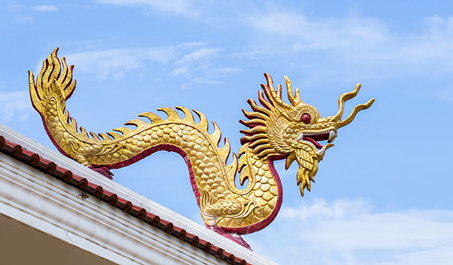Feng Shui symnols, such as red tassels, a three-legged money frog, a pair of Mandarin ducks, a bowl of oranges, an aquarium with goldfish, carry specific meanings and cultural significance in Chinese Feng Shui. These symbols, commonly used in classical Feng Shui practices, are believed to attract wealth, harmony, love, and more, especially when there is a strong personal connection to them.
Popular animal symbols include the arowana (or dragon fish) and goldfish, often used to symbolize wealth. Butterflies represent love, while horses signify speed, freedom, and success. Birds symbolize freedom and inspiration, with cranes representing longevity, Mandarin ducks symbolizing lifelong love, peacocks promoting fame, and roosters aiding career advancement and preventing workplace gossip.
Prosperity symbols include the three-legged money frog, which should be placed diagonally facing the front door. Other symbols of wealth are red envelopes filled with coins, the Feng Shui dragon, and a set of three Chinese coins tied with a red string. The mystic knot symbolizes a long and happy life, and the double happiness symbol strengthens love and marriage. Fu dogs act as guardians of wealthy homes.
Flower symbols like peonies, lotuses, orchids, and chrysanthemums represent flourishing energy and good luck. It is best to display living flowers, but high-quality images or silk flowers can be used as alternatives, while avoiding plastic or dried flowers, which represent dead chi.
Fruit symbols each have specific meanings: peaches symbolize immortality, grape abundance, apples peace, pineapples good luck, and pomegranate fertility. Oranges are believed to ward off bad luck, with the traditional placement being nine oranges in the kitchen for prosperity.


